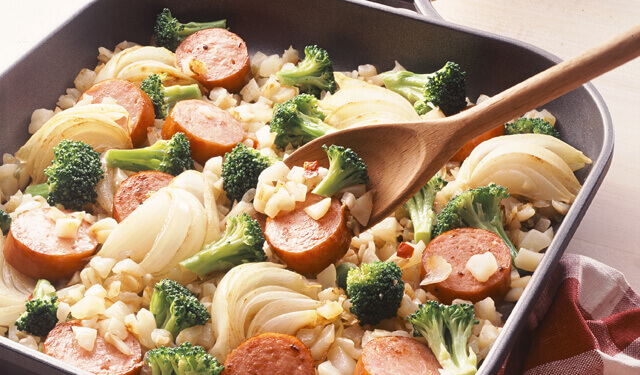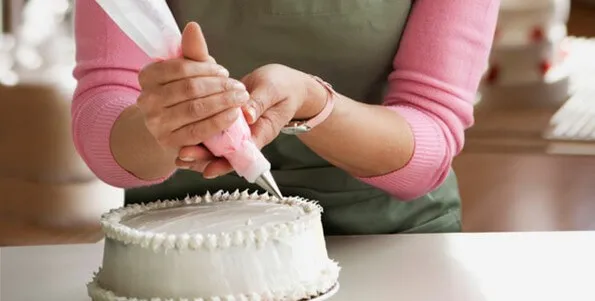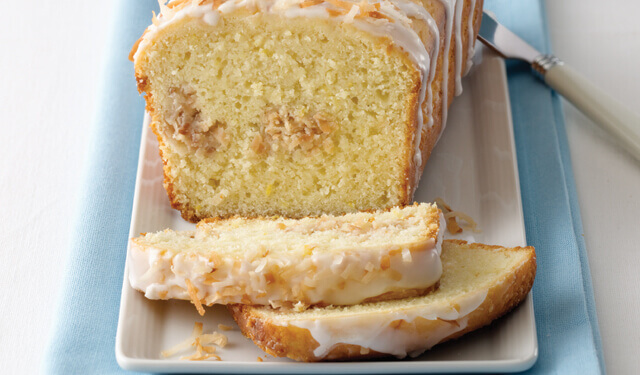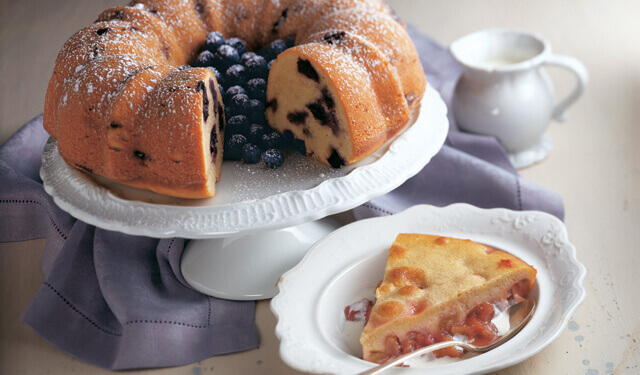

Topping It Off - Icing on the Cake (or Quick Bread!)
Soft or hard, sticky or set. What kind of glaze or frosting do you want to use for that recipe you just made?
SEE THE RECIPE
 by
Land O'Lakes Test Kitchen
by
Land O'Lakes Test Kitchen
 by
Land O'Lakes Test Kitchen
by
Land O'Lakes Test Kitchen

Soft or hard, sticky or set. What kind of glaze or frosting do you want to use for that recipe you just made? Let us tell you about a few easy kinds, and then you can decide what will do the job for you.
Powdered Sugar Glaze
One of the most common ways to make a glaze is to start with powdered sugar (also known as confectioner’s sugar). There is no cooking involved with this glaze recipe. To make a standard powdered sugar glaze, you simply combine powdered sugar, a liquid such as water, milk or half and half, and some vanilla. The ratio is usually 1 cup powdered sugar to 1 tablespoon of liquid, plus about 1/2 teaspoon of vanilla. However, it is easy to change the flavor of this glaze by using a liquid such as orange juice or lemon juice or a flavoring such as almond or rum instead of vanilla.
This is really a “no fail” mixture as you can make it thinner or thicker by adding more liquid or more powdered sugar. Once you make this mixture a time or two, you won’t need an actual recipe since it is so forgiving. There is no fat in this glaze so it will set up to be firm. This is a great mixture to drizzle over cookies or quick breads such as scones, breads and muffins since they won’t be sticky when you pick them up. Try Lemon Coconut Bread, where the glaze perfectly complements the bread.
Buttercream Frosting
You can turn a powdered sugar frosting into a butter frosting. The butter makes the frosting soft and creamy. There are a variety of recipes for this but the basic recipe is a combination of butter, powdered sugar and milk, half and half or cream.
Similar to the glaze, the consistency of the butter frosting can easily be adjusted by adding more liquid or more powdered sugar. Buttercream frosting is also great for adding a wide variety of flavors, such as orange peel, lemon peel, a variety of extracts like almond and rum, or other liquids such as coffee, orange juice and melted chocolate.
This type of frosting is very versatile, as it works well spread over bars or used as a filling for layer cakes. Try our recipe for Ultimate Chocolate Cake. It is also a perfect frosting to put into a pastry bag and pipe for that special look. You will love its indulgent, rich flavor. Keep in mind that it will stay soft, so foods items such as bars should not be stacked. Remember to cover and refrigerate any baked good with butter frosting to keep it fresher longer.
Royal Icing
Royal icing is one that will become hard after it dries. You will often see it spread over cookies to create a special design and it is used for the “glue” when creating a food craft such as a gingerbread house. Royal icing is made from egg whites or meringue powder, which you can purchase at specialty food decorating stores or from a website. This frosting also uses powdered sugar and water as the liquid to dissolve the sugar. It is often tinted with food color to create unique durable designs. When royal icing is used on cookies, it allows you to stack the cookies or place them in a food basket without the danger of the frosting sticking or smearing onto other items.
Ganache
Finally, there is ganache, which you may have seen chefs make on television, or in a high-end bakery. Ganache is a blend of cream and chocolate, heated until the chocolate melts. This rich mixture can be used to fill or glaze over a pastry such as a cake or torte and gives your dessert a pastry cart finish. The word “ganache” sounds very gourmet, and it is; yet it’s very easy to use and adds an impressive touch.
So, the next time you are baking, decide which topping from glaze to ganache suits your need. It is the sweet finishing touch that everyone will love.
Share Your Thoughts
Did you find this article helpful? Has it inspired you? What else would you like to know?




